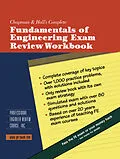I am often asked the question, "Should I get my PE license or not?" Unfortunately the answer is, Probably. First let's take a look at the licensing process and understand why it exists, then take a look at extreme situations for an attempt at a yes/no answer, and finally consider the exams. All 50 have a constitutionally defined responsibility to protect the public. From an engineering point of view, as well as many other professions, this responsibility is met by the process of licensure and in our case the Professional Engineer License. Though there are different experience requirements for different states, the meaning of the license is common. The licensee demonstrates academic competency in the Fundamentals of Engineering by examination (Principles and Practices at PE time). The licensee demonstrates qualifying work experience (at PE time). The licensee ascribes to the Code of Ethics of the NSPE, and to the laws of the state of registration. Having presented these qualities the licensee is certified as an Intern Engineer, and the state involved has fulfilled its constitutionally defined responsibility to protect the public.
Inhalt
Introduction. Exam strategy - EIT. Problem Solving. Section 1: Mathematics. Section 2: Statics. Section 3: Mechanics of Materials. Appendix A: Combined Stress (Example). Section 4: Dynamics. Table I: Common Examples of Simple Harmonic Motion. Section 5: Fluid Mechanics. Section 6: Electricity/Electronics. Section 7: Chemistry. Section 8: Thermodynamics. Section 9: Materials Science. Section 10: Engineering Economics. Section 11: Problems. Section 12: Solutions to the practice problems. Section 13: Simulated Exams. Index.
